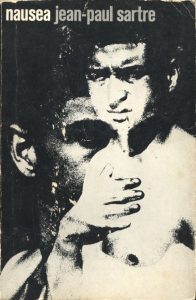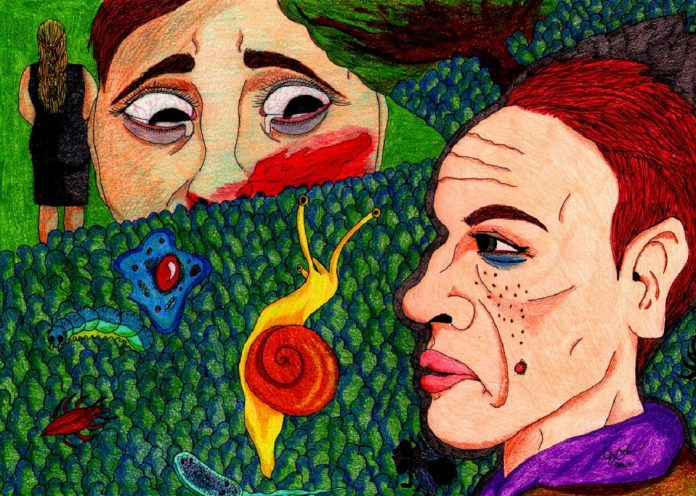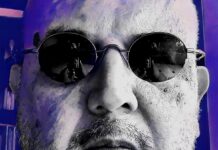A Look Back at Sartre’s Nausea
Philosophers can be incisive storytellers—and have been since the earliest days of the discipline. The most memorable passages in Plato’s Republic deal with his allegory of the cave, which cleverly takes the most abstract part of his philosophy—unavoidably abstract because our philosopher is trying to explain the specifics of the Platonic theory of ideas—and brings it to life for his audience as a kind of Kafkaesque fantasy tale. In later years, philosophers didn’t forget the power of fiction to bring bold ideas to life. Sir Thomas More presented his alternative to Plato, his so-called Utopia, in the form of story. And philosophers presided over the birth of the novel, even before the days of Fielding, Richardson and Defoe.
Three of the greatest storytellers in France during that same period—Voltaire, Rousseau and Diderot—were also philosophers of the highest rung. In fact, Voltaire is probably better remembered for Candide than for his ‘straight’ philosophy, and his contemporaries Rousseau and Diderot also made significant contributions to narrative literature. Even in the first half of the 20th century we find Santayana taking the plunge into fiction with The Last Puritan (published three years before Sartre’s Nausea) and Bertrand Russell (like Sartre) actually winning a Nobel Prize in literature—although Russell’s non-fiction writings probably did more to earn him this honor than his short stories.
The existentialist tradition is especially rich in narrative possibilities. The key creators of existentialism each were skilled storytellers. For example, Kierkegaard’s Repetition is usually described as a philosophical treatise, but it is actually an extraordinary short novel, and many of his other key writings (especially Either/Or) seem to straddle fiction and theory. The same can be said of Nietzsche’s Thus Spoke Zarathustra. The Spanish existentialist Miguel de Unamuno is almost as famous for his short novels as he is for The Tragic Sense of Life and his other philosophical works. And Dostoyevsky, for his part, is a pure novelist, but with so much philosophy crammed into his works that some sections of his books, such as “The Grand Inquisitor” seem to follow in the footsteps of the great Socratic dialogues and other theory-driven writings. Among the leading existentialists, only Heidegger avoided fiction, although I suspect that he would have flourished as a novelist.
Then we arrive at Sartre, the last writer to reach the highest levels of success as both philosophy and literature. When asked by an interviewer in 1975 what his lasting achievements were, Sartre mentioned Nausea first on his list, followed by his plays No Exit and The Devil and the Good Lord. Only then did he move on to his philosophical works. I suspect that posterity will flip-flop this ranking—I consider Being and Nothingness as his most significant work, but immediately after I would place his plays, adding The Flies to the two works cited by Sartre, and Nausea. These works, now more than three quarters of a century old, continue to provoke readers with their disturbing incidents and controversial concepts.
Nausea can perhaps be best described as an existential horror novel. At the time Sartre was writing this book, horror movies had entered their golden age. Frankenstein, Dracula and the Mummy were frequent visitors to the silver screen, and turning into what, nowadays, we would call brand franchises. But Sartre’s horror required no monsters or gloomy European castles. Even so, the terror of his story was all the more pernicious for its lack of external referents—because of its very pervasiveness, it could offer no escape.
For the narrator of Nausea, Antoine Roquentin, a failed historian, the horror is everywhere—so much so that everything surrounding him can produce a queasy sense of nausea. Physical objects leave him disgusted. “Every existing thing is born without reason,” he laments, “prolongs itself out of weakness and dies by chance.” Try putting that up on a dorm room poster, and see how many copies you sell.
When Roquentin picks up a pebble on the seashore, it produces “a sort of sweetish sickness.” But the mineral world is the least bothersome aspect of existence. Far worse is the vegetative world: a tree seems like a loathsome excrescence. Even the processed products of trees fill him with dismay—when he sees a piece of paper on the ground Roquentin finds himself incapable of picking it up.
Our protagonist’s own face in a mirror produces a disagreeable sensation—it has no more meaning to him than a “clod of earth.” “The eyes especially are horrible seen so close. They are glassy, soft, blind, red-rimmed, they look like fish scales.”
Sartre understands that modern readers will interpret this condition as a kind of psychological malaise. Almost any other 20th century novelist, confronted with this situation, would send his hero to the psychiatrist’s couch, or at lease serve up a kind of medical diagnosis for Roquentin’s neurosis. But Sartre was not a admirer of the fashionable schools of psychology—indeed, his critique of Freud in Being and Nothingness stands out as one of his most important contributions to modern thought. That dismantling of the concept of the unconscious is still in our author’s future, but even at this stage of his career, he wants to make clear that his story’s narrator does not suffer from mental illness.
“The Nausea is not inside me: I feel it out there…everywhere around me,” Roquentin insists. “I am the one who is within it.”
This is an extraordinary premise for a novel, and Sartre deserves credit for embarking on a story that no other novelist had ever attempted. All of us are familiar, of course, with plots about daunting obstacles, terrible consequences, and frightening conditions—those are the very building- blocks of fiction. But has any novelist ever tried to write a tale in which everything and everybody (including the narrator!) contributes to the terror?
Nonetheless, Sartre seems aware that an entire novel about the nauseous and disgusting might be too much for even the most tolerant reader. So he inserts a number of set pieces into his book, some with very little connection to the larger story —but invariably suitable for Sartre to address a favorite subject or embark on a polemical attack.
He introduces an eccentric subsidiary character, referred to as the ‘self-taught man’, an individual Roquentin encounters frequently at the library where he is researching his book. The self-taught man is an ardent humanist, and provides a convenient target for Sartre, who in his later writings would mount a full-scale attack on humanism (never quite convincing, unlike his assault on Freud). Another lengthy interlude involves Roquentin’s reactions to a series of portraits of historical figures in a gallery. Here, too, the scene is poorly integrated into the larger plot, but provides Sartre with a excellent platform for his views on the falsifications of history and biography. Another sub-plot on Roquentin’s former lover, an actress, gives him a similar opportunity to comment on the faux reality of the theater. The fact that Sartre, in later years, would focus on biography, history, drama and other areas that he savagely attacks in this early work, add a special frisson to the proceedings.
In general, Sartre is more committed to philosophy than to fiction, even here in the pages of his greatest novel. But when the story lags, the intensity of the intellectual debate flares up to compensate—so much so, that Nausea is essential reading not just for students of literature, but also for anyone interested in the evolution of Sartre’s views on a range of philosophical issues.
Perhaps the most surprising aspect of this book is Sartre’s decision to supply a happy ending. His horror story ends with a way out of the nausea. I am less than convinced by this turnabout in our suffering Mr. Roquentin, but as a longtime jazz lover, I am secretly pleased at the cure for the existential nausea. A jazz record featuring a singer and saxophonist does the trick—to be specific an old recording of “Some of These Days.” I only wish Sartre had been more specific about the names of the musicians on the date (he doesn’t identify any of them). I would love to hear the jazz record that trumps Freud, cures the ill, and solves existential angst.
(Some have suggested that Sartre is referring to the famous Sophie Tucker recording of “Some of These Days,” but the context of the novel suggests a different version. Sartre specifically mentions that the vocalist is African-American, and it is unlikely that he would make that assumption when listening to the Ukrainian-born Jewish singer Tucker. The Tucker track also features a shrill clarinet that could hardly be mistaken for a sax. But hundreds of other recordings of this song have been made by jazz artists, including Louis Armstrong, Bing Crosby, Ethel Waters and Cab Calloway.)
When jazz writers decide to adopt a philosophical tone, they often cite Sartre’s contemporary Theodor Adorno. This is a strange choice, not only because of Adorno’s longstanding hostility toward jazz, but even more due to the close-minded elitism of his screeds. If any American music critic had written with such clumsy generalizations about jazz, posterity would have soon forgotten these opinions—or held them up to ridicule—but somehow the attachment of the name of a progressive European thinker assigned on college campuses has given these views a half-life they don’t deserve on their own merits. So let me suggest that jazz writers who want to cite a fashionable philosopher switch over to Sartre, who frequented jazz clubs and listened to the music with a sensitivity to its inner emotional meaning.
Sartre called jazz “the music of the future” and made an effort to get to know Miles Davis and Charlie Parker, and listen to John Coltrane. His writings on the subject are more atmospheric than analytical, but it is likely that Sartre saw jazz as the musical manifestation of the existential freedom he described in his philosophical texts. Jazz musicians, he once explained, are “speaking to the best part of you, the toughest, the freest.”
And who knows, perhaps jazz does cure existential angst. Maybe it delivers more value for money than a trip to the psychiatrist’s couch or the latest advertised chemical cure for your woes. In our current age, when people are increasingly looking for alternative treatments, here’s one that can be had for a song.

Acknowledgement:
The article originally appeared at: http://fractiousfiction.com/nausea.html
About the author:
Ted Gioia writes on music, literature and popular culture. His latest book is Love Songs: The Hidden History, published by Oxford University Press.
















